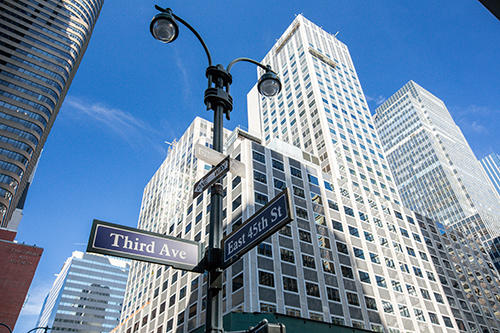
Delivering Asset Value through Sustainability and Health
With the recent COP26 summit at a global scale and the passing of the infrastructure bill at a national level, sustainability has reemerged as a primary consideration in real estate development and operations. State and federal policies are incentivizing more sustainable building practices, while buildings preparing for re-occupancy are encountering new questions from tenants about the ability of spaces to promote occupant health following the COVID-19 pandemic.
A recent panel event held in New York City explored how asset value can be delivered through sustainability and health in the wake of the COVID-19 pandemic. The panel was hosted by the Urban Green Council, a nonprofit dedicated to advancing sustainability in New York real estate, and View Inc., a smart building technology company transforming buildings for sustainability and health.
Speakers on the panel included Prof. Christoph Reinhart, director of the Sustainable Design Lab at MIT, and Sean Brennan, head of research at the Urban Green Council. Prof. Reinhart leads a team that built software tools used across the globe to model building performance and recently developed city-scale energy models designed to help policymakers and Community Resource Exchange (CRE) leaders adapt to a changing climate. Sean Brennan leads Urban Green’s research team and is responsible for identifying and executing studies that reveal industry trends and influence building design. He has worked in the energy and utility space for over ten years and has specialized in building science and analysis. Dr. Piers MacNaughton, VP of Health Strategy at View Inc, moderated the panel discussion.
The pandemic has altered building use and occupancy patterns. Brennan shared data from Google that showed an 80% dip in NYC office occupancy during the pandemic and currently shows occupancy rates 40% below baseline levels. High vacancy rates increase pressure to create spaces that will bring occupants and tenants back to the city. Buildings will need to be of higher quality to entice tenants to return to working and living in Manhattan. The panel explored whether this flight to quality can and will be monetized.
The recently passed infrastructure bill and upcoming reconciliation packages include provisions that incentivize sustainable building strategies at a federal level. Despite having such influential incentivization plans in place, the current retrofit rate is 1%, well below what is needed to meet science-based carbon emission targets.
Local ordinances in New York City both reward and penalize buildings for their sustainability performance. For example, Local Law 97, part of the Climate Mobilization Act, and Mayor de Blasio’s larger New York City Green New Deal were passed in April 2019. Under LL97, most buildings that do not limit greenhouse gas emissions and meet specific energy efficiency goals by 2024 will be subject to fines. Conversely, buildings that wish to retrofit their systems can take advantage of Property Assessed Clean Energy (PACE) financing, a program that funds improvements to the energy efficiency and sustainability of commercial property owners’ buildings. Recently, 111 Wall Street became the first building in New York City to utilize C-PACE financing.

What are the options, then, when considering retrofitting? Using energy as the only deciding factor does not always fully justify the cost of retrofitting. However, the return on investment becomes much more compelling when one begins to consider occupant benefits in the calculations. In the modeled renovation of 345 Park Avenue in Manhattan completed by Dr. Reinhart’s team, the addition of electrochromic glass provided a 20% return on investment when accounting for higher rents and the increase in rentable square feet. A similar instance occurred in 730 3rd Avenue, where electrochromic glass allowed owners to fit the same number of people into 30% less space, allowing them to then rent out the extra space to additional tenants.
As part of the movement towards sustainable buildings through LL97, there is pressure to reduce energy consumption but not necessarily to promote occupant health and wellness. For example, heat pumps, building electrification, boiler replacements, and insulation provide substantive energy savings but do not meaningfully impact the end-user. During the retrofit process, developers should consider repositioning the asset to deliver at the same time an enhanced occupant experience. This will ultimately translate into faster lease velocity, higher rents, and potentially greater tenant density.
View Smart Windows, for example, decrease buildings’ HVAC and energy usage through predictively tinting windows along the sun’s path. At the same time, smart windows also eliminate the need for blinds to combat glare while increasing occupants’ thermal and visual comfort and access to views of the outside. Both the creation of high-quality spaces and the need for sustainable buildings can be addressed through the addition of a single amenity, View Smart Windows.